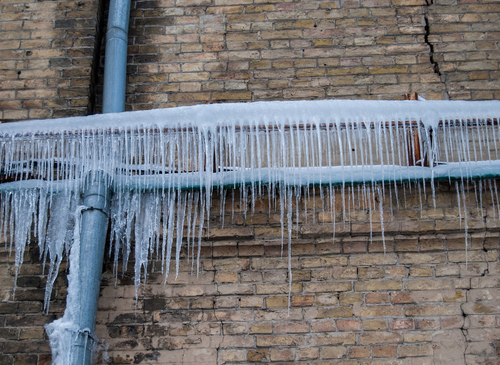Were you looking for insight on How To Avoid Freezing Pipes?

Winter can ruin your pipes, particularly by freezing pipelines. Right here's how to avoid it from occurring and what to do if it does.
Introduction
As temperatures decline, the risk of frozen pipelines rises, possibly causing expensive repair work and water damage. Recognizing how to avoid icy pipes is important for property owners in cold environments.
Understanding Frozen Pipelines
What triggers pipelines to ice up?
Pipes ice up when exposed to temperatures listed below 32 ° F (0 ° C) for prolonged durations. As water inside the pipelines ices up, it increases, putting pressure on the pipe walls and possibly causing them to rupture.
Dangers and problems
Frozen pipelines can result in water disturbances, building damages, and pricey fixings. Burst pipes can flood homes and cause considerable architectural damages.
Indications of Frozen Pipes
Recognizing frozen pipelines early can prevent them from breaking.
Exactly how to determine frozen pipes
Look for reduced water flow from taps, unusual smells or noises from pipes, and visible frost on exposed pipelines.
Prevention Tips
Insulating prone pipes
Wrap pipes in insulation sleeves or use warm tape to protect them from freezing temperature levels. Focus on pipelines in unheated or exterior locations of the home.
Home heating methods
Keep interior areas properly warmed, especially areas with plumbing. Open cabinet doors to enable cozy air to distribute around pipelines under sinks.
Protecting Outside Plumbing
Yard hose pipes and exterior faucets
Disconnect and drain pipes garden hoses prior to wintertime. Mount frost-proof spigots or cover outside taps with shielded caps.
What to Do If Your Pipes Freeze
Immediate actions to take
If you presume frozen pipes, maintain faucets open up to relieve pressure as the ice melts. Make use of a hairdryer or towels soaked in warm water to thaw pipelines gradually.
Long-Term Solutions
Architectural changes
Think about rerouting pipelines away from exterior wall surfaces or unheated areas. Add additional insulation to attics, cellars, and crawl spaces.
Upgrading insulation
Invest in top quality insulation for pipes, attic rooms, and wall surfaces. Proper insulation helps maintain constant temperature levels and lowers the threat of frozen pipes.
Verdict
Protecting against frozen pipelines calls for proactive actions and fast actions. By recognizing the causes, signs, and preventive measures, house owners can protect their pipes during cold weather.
5 Ways to Prevent Frozen Pipes
Drain Outdoor Faucets and Disconnect Hoses
First, close the shut-off valve that controls the flow of water in the pipe to your outdoor faucet. Then, head outside to disconnect and drain your hose and open the outdoor faucet to allow the water to completely drain out of the line. Turn off the faucet when done. Finally, head back to the shut-off valve and drain the remaining water inside the pipe into a bucket or container. Additionally, if you have a home irrigation system, you should consider hiring an expert to clear the system of water each year.
Insulate Pipes
One of the best and most cost-effective methods for preventing frozen water pipes is to wrap your pipes with insulation. This is especially important for areas in your home that aren’t exposed to heat, such as an attic. We suggest using foam sleeves, which can typically be found at your local hardware store.
Keep Heat Running at 65
Your pipes are located inside your walls, and the temperature there is much colder than the rest of the house. To prevent your pipes from freezing, The Insurance Information Institute suggests that you keep your home heated to at least 65 degrees, even when traveling. You may want to invest in smart devices that can keep an eye on the temperature in your home while you’re away.
Leave Water Dripping
Moving water — even a small trickle — can prevent ice from forming inside your pipes. When freezing temps are imminent, start a drip of water from all faucets that serve exposed pipes. Leaving a few faucets running will also help relieve pressure inside the pipes and help prevent a rupture if the water inside freezes.
Open Cupboard Doors
Warm your kitchen and bathroom pipes by opening cupboards and vanities. You should also leave your interior doors ajar to help warm air circulate evenly throughout your home.

We hope you enjoyed our section about How to Prevent Your Pipes From Freezing. Thanks for taking the time to read our blog. Please take the opportunity to promote this blog posting if you enjoyed reading it. I treasure your readership.
Call Today
Comments on “Essential Methods for Preventing Frozen Plumbing in Cold Weather”